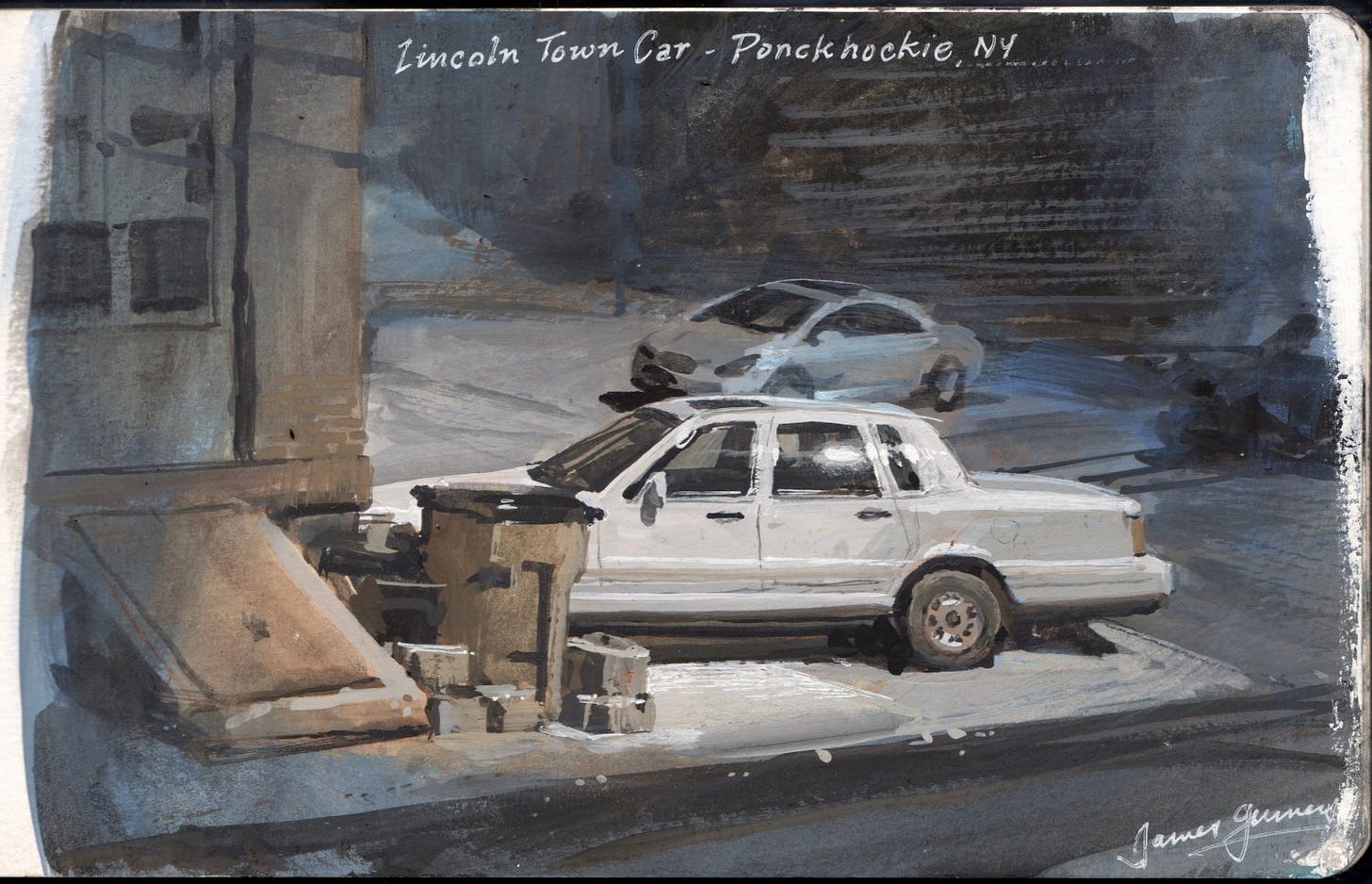Here are my events for Lightbox Expo in Pasadena a week from now. The rest of the time I'll be wandering around. I look forward to meeting you there.
Sunday, October 20, 2024
Lightbox Schedule
Here are my events for Lightbox Expo in Pasadena a week from now. The rest of the time I'll be wandering around. I look forward to meeting you there.
Friday, October 11, 2024
Colossal Characters in Two Weeks
Thomas Fluharty @thomasfluharty
Jess Karpishin @jess.karp
Karla Ortiz @kortizart
John Burton @johnburtonart
Kiptoe @kiptoe1
Angela Sung @angothemango
Sean Bodley @seanbodley
Jeff Hong @chromacorg
Amanda Grose @myworldinillustration
Qianjian Ma @q_sketches
Kate Rado @katerado
James Gurney @jamesgurneyart
Monday, October 7, 2024
Painting a Film-Noir Streetscape
Welcome Visitors and New Subscribers.
Link to YouTube short video. This Lincoln Town Car looks mysterious to me, like it’s waiting to pick someone up for some weird errand.
I want to paint it faithfully, but change the lighting to make it look like a moody and mysterious street scene that evokes the mood of film noir. More about this strategy at my Substack.
Friday, October 4, 2024
Penovác's Cats
He uses a wet-in-wet technique, which involves applying wet paint to a pre-wetted surface. This approach allows the pigments to blend and spread organically, creating soft, ethereal effects.
More about how he paints these cats on my Substack post
Tuesday, September 24, 2024
Which Sticker Idea Is Best?
Wednesday, September 18, 2024
Deeply Ingrained Concepts
For example, here are some concepts:
1. That thinking takes place in the brain.
But scientists are helping us to understand embodied cognition, which suggests that thinking is distributed throughout the body and shaped by our sensory experiences.
2. That consciousness only happens with complex nervous systems
But modern botanical science and studies of colonial insects suggests that emergent behaviors and structures appear beyond our current understanding of information processing.
3. That the mind and the body are separate.
But this Cartesian dualism has been challenged by various philosophical and scientific perspectives, including monism, which posits that the mind and body are intertwined and inseparable.
4. That we act on the basis of free will.
But many philosophers argue that free will is an illusion, and that our choices are influenced by factors like genetics, environment, past experiences, and even gut bacteria which shape our brain activity and behavior.
5. That we perceive the totality of the world around us.
But we’re only aware of a thin slice of the electromagnetic spectrum, and many animals and plants can sense things we’re blind to, such as ultraviolet light, magnetic fields, or vibrations in the air.
6. That time is linear and absolute.
But modern physics has shown that time is relative, flexible, and dependent on the observer's frame of reference. Some cultures also perceive time as cyclical or fluid.
Read the rest for free on Substack Art: "A Poet" by Ernest Meissonier
Monday, September 2, 2024
The Store Is Open
Life Lessons from Dinosaurs is now available, and Artist's Guide to Sketching can be preordered here.
Sunday, September 1, 2024
Famous Artist's School Ad
Here's part of an advertisement from the Famous Artist School for their correspondence course.
The lobster shack with its seagulls, pilings, and boats demonstrates a lot of depth and overlapping, skills that beginning artists often lack. But this simple step-by-step sequence makes it look attainable.
Tuesday, August 20, 2024
Painting Calm Water
New YouTube video about painting calm water from a chaotic roadside.
Friday, August 16, 2024
Nuit Américaine
You can make a daytime drawing look like night by suppressing detail and softening edges in the darker areas. More on "day-for-night sketching" on Substack.






















